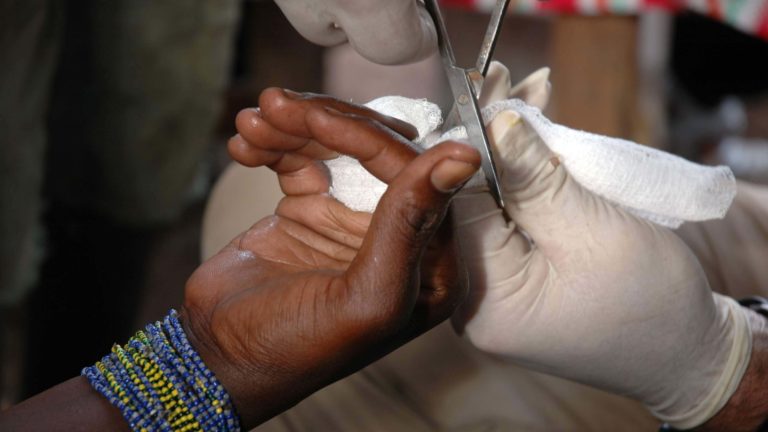Evidence-based wound care resources
Following a WAGEIHP staff member’s visit to East Africa in 2009, the group began to develop evidence-based information about affordable, locally accessible wound care products to help improve health outcomes in countries with limited health care resources. Clinicians can use this information to decide whether to continue with current practices or replace them with a safer, more effective but affordable approaches.

Antiseptics
Acetic acid
What is the efficacy of acetic acid in relation to anti-microbial action and wound healing? Acetic acid is a traditional antiseptic with an ancient history claimed to go back more than 6,000 years.1 Its more modern use in wound management dates from World War 1 when Taylor found that treating wounds with a 1% solution for two weeks resulted in the elimination of Bacillus pyocyaneus 2
Download information [.doc 100 kb]
Chlorhexidine
A review of the evidence on use of chlorhexidine in wound care indicates that research on its effectiveness in reducing bacterial burden is limited to preparations of 1% or less concentration and has primarily been conducted in laboratory settings. While effectiveness in eradicating bacteria has been tested in-vitro and animal studies, the limited research in clinical settings fails to demonstrate an associated improvement in the rate of wound healing.
Download information [.doc 112 kb]
Citric acid as a topical antiseptic
Citric acid has been used as a low cost option for managing a wide range of chronic wounds which have not responded to conventional management.
Download information [.doc 100 kb]
Dressings
Banana leaf dressings
Banana leaves provide a low cost, traditional wound dressing option in tropical countries where supplies are easily accessible at no or very low cost.
Download information [.doc 2101 kb]
Potato Peel Dressings
Potato peel dressings (PPD) provide a low cost, traditional wound dressing option for the management of several types of wounds.1-3
Download information [.doc 1071 kb]
Skin conditions
Effectiveness of topical coconut products
Despite the wide use of coconut products for medicinal purposes by populations in tropical regions, there are only a few clinical studies of its effectiveness in treating skin conditions and no studies were identified on their use in wound management.
Download information [.doc 94 kb]
Management of wound odour
Tea (Green) for managing malodorous wounds
Malignant fungating wounds (MFWs) are known to be particularly malodourous as a result of metabolic processes that occur as bacteria breaks down necrotic tissue.1 Wound odour has a negative psychosocial impact on patients as it is related to anxiety and stress; feelings of disgust and poor body image; and social isolation and loneliness.2
Download information [.doc 106 kb]
Wound management
Aloe vera for wound healing
Aloe vera is a succulent plant that has traditionally been used for natural wound healing.1-3 The leaves contain a gel substance that is harvested, then stabilised and sterilised with heat, before application to a wound (generally a burn).1
Download information [.doc 242 kb]
Turmeric (curcumin) in wound management
Curcumin is reported as having, among others, anti-inflammatory, antioxidant, antimicrobial and anti-cancer properties and is used to treat a wide range of conditions. 13, 17
Download information [.doc 55 kb]